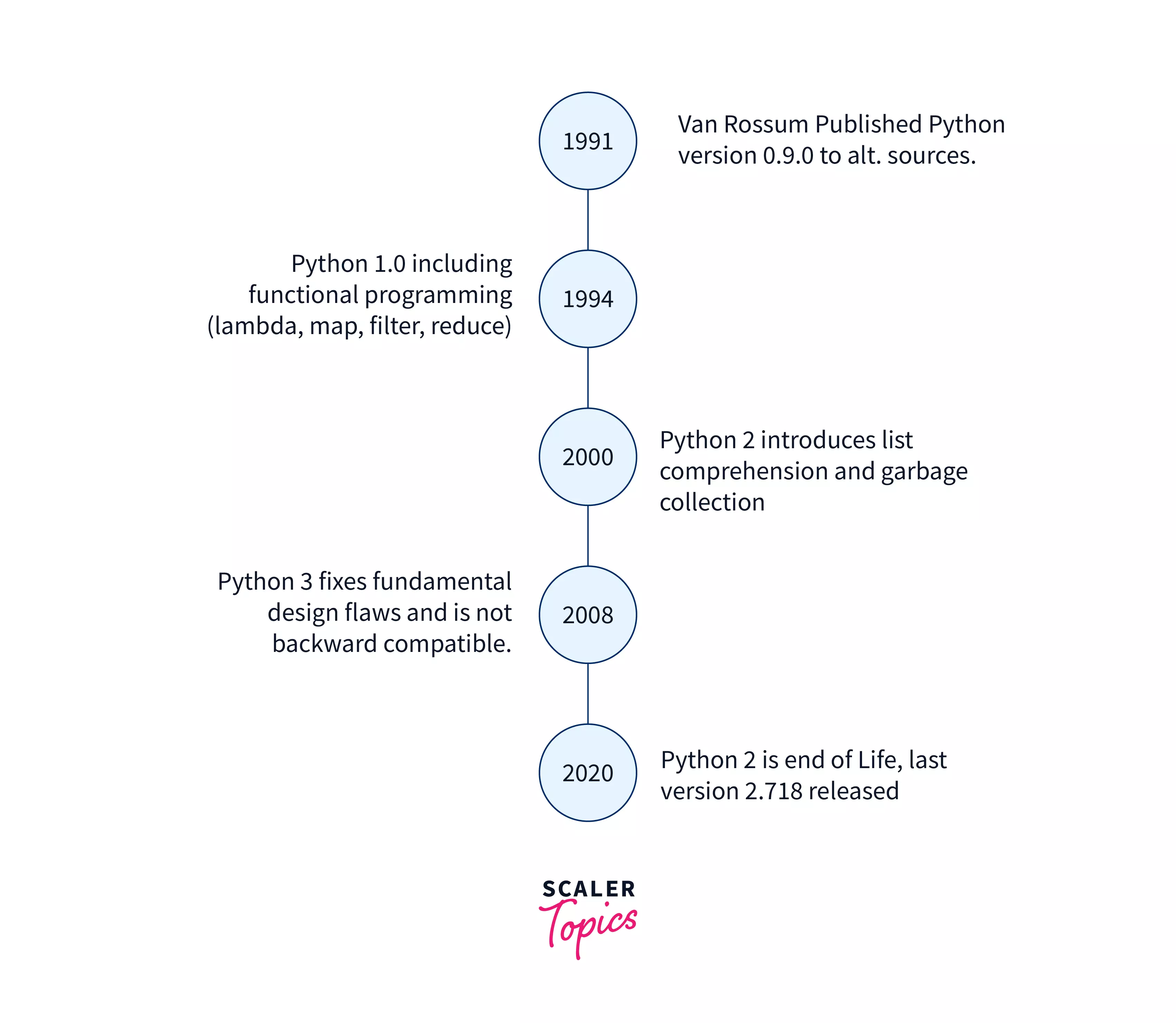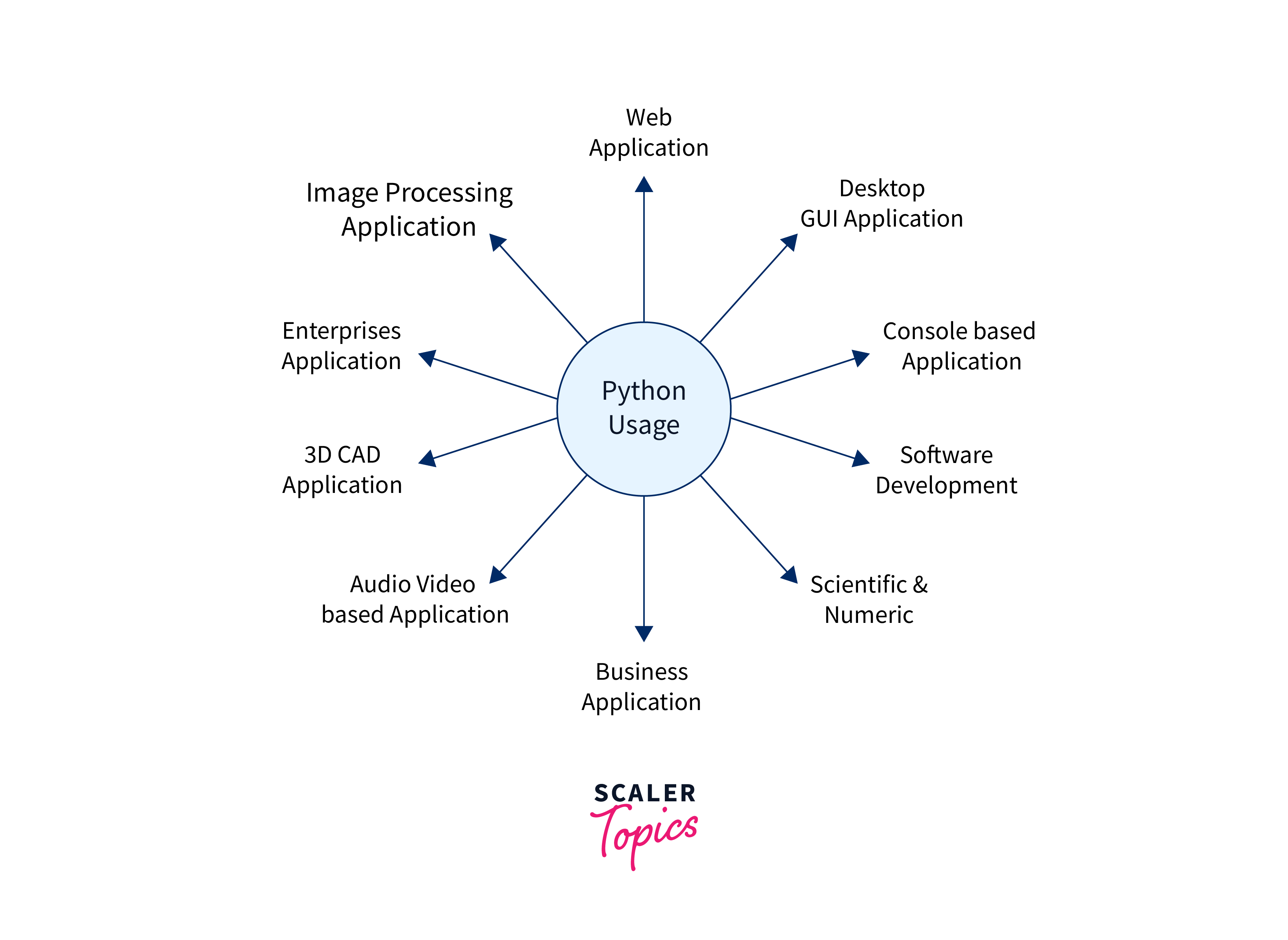In Which Year Was the Python Language Developed?

In which year was the Python Language Developed?
Python was developed in the late 1980s, and its implementation began in December 1989 by Guido van Rossum at CWI in the Netherlands as a successor to ABC, capable of managing exceptions and interacting with the Amoeba operating system.It was developed so that programmers could write the concepts in fewer lines with very easy syntax.

What is the Significance of the name Python?
Choosing Python can not be a mistake. There is a fact behind choosing Python. The fact is that one day, Guido van Rossum was reading the script of the BBC comedy series "Monty Python Flying Circus". Guido wants to select a name that is unique, sort of easy to pronounce, and a little bit mysterious. So he chose Python as the name of his programming language.
Nowadays, we can see that Python is everywhere, developing web applications, automating scripts, and training machine learning models.
Python Version List
| Python Version | Release Date |
|---|---|
| Python 1.0 | January, 1994 |
| Python 1.5 | December 31, 1997 |
| Python 1.6 | September 5, 2000 |
| Python 2.0 | October 16, 2000 |
| Python 2.1 | April 17, 2001 |
| Python 2.2 | December 21, 2001 |
| Python 2.3 | July 29, 2003 |
| Python 2.4 | November 30, 2004 |
| Python 2.5 | September 19, 2006 |
| Python 2.6 | October 1, 2008 |
| Python 2.7 | July 3, 2010 |
| Python 3.0 | December 3, 2008 |
| Python 3.1 | June 27, 2009 |
| Python 3.2 | February 20, 2011 |
| Python 3.3 | September 29, 2012 |
| Python 3.4 | March 16, 2014 |
| Python 3.5 | September 13, 2015 |
| Python 3.6 | December 23, 2016 |
| Python 3.7 | June 27, 2018 |
The above table shows the complete version list of Python programming language.
Python 3.7.3 - the latest version
The most used versions of Python are 2.x and 3.x. There is a lot of competition between them. We use Python for developing automation scripts and developing software. Due to its simplicity and elegance, very famous organizations like Google and Facebook use the Python language. Python 3 is more readable, easier to grasp, and more popular than Python 2. A lot of libraries in Python 2 are not forward-compatible. A lot of libraries are created in Python 3 to be strictly used with Python.
Future of the Python Language
More than 25 million users and more than 8 million professional developers trust Python as their go-to language. Python has managed to reach a popularity that is higher than the other popular languages like C++ and Java. We can say it is the fastest-growing language in this tech world. There are thousands of reasons why we can say that the Python language is so popular.

Let's discuss some of the reasons:
- It’s an open-source language. Python is developed under an OSI-approved open-source license, making it freely usable and distributable, even for commercial use.
- Python is a platform-independent language, so you can run it on any operating system freely.
- Python has a large developer community that offers extensive community support to its users.
- Python has been around for more than 30 years now. So, if you have an issue, you can easily find a solution by conducting a Google search.
- As we have discussed earlier, it is the most user-friendly language.
- The most important thing is that it’s versatile; you can do many things like artificial language, data analysis, machine learning, and so on.
Conclusion
- Python has managed to reach a popularity that is higher than the other popular languages like C++ and Java.
- Nowadays, we can see that Python is everywhere, developing web applications, automating scripts, and training machine learning models.
- It’s an open-source language. Python is developed under an OSI-approved open-source license.
- Python is a platform-independent language, so you can run it on any operating system freely.
